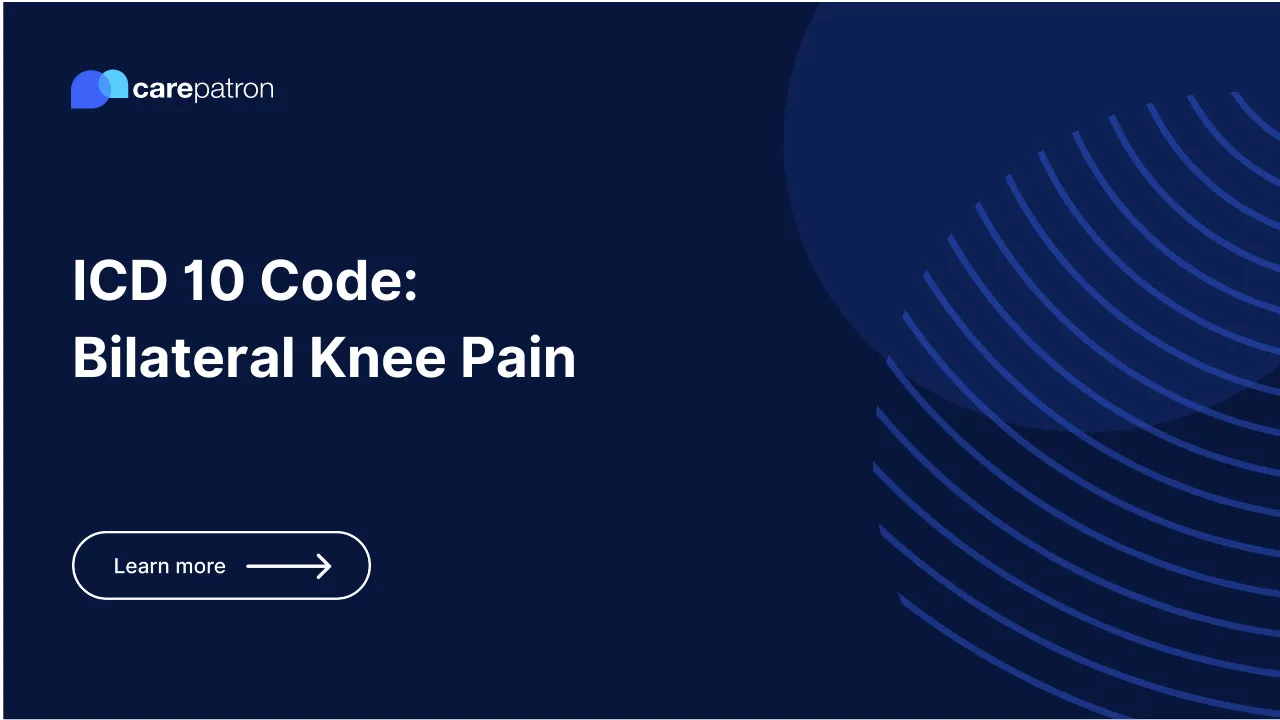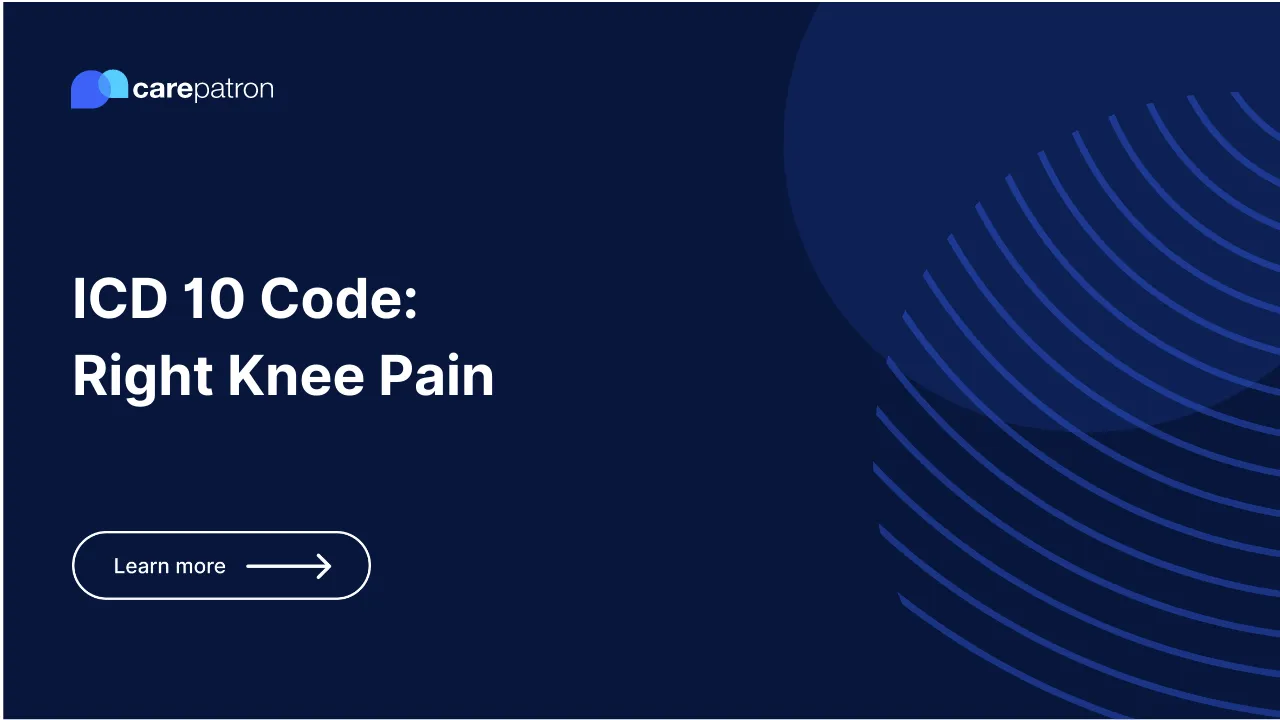M79.601 – Pain in right arm
M79.601 - Pain in right arm: Specific ICD-10 code for localized discomfort in the right upper extremity. Ensure accurate diagnosis and treatment for optimal relief.

M79.601 Diagnosis Code: Pain in right arm
Pain in the right arm, designated as M79.601 according to the International Classification of Diseases, is characterized by discomfort, soreness, or distress experienced in the upper extremity. This diagnosis code is specific to pain in the right arm and assists healthcare professionals in accurately documenting and classifying the condition for diagnostic and billing purposes.
Key points to consider:
Localization of Pain:
- The pain is primarily localized in the right arm, encompassing the region from the shoulder to the fingertips.
- The severity and exact location of the pain may vary depending on the underlying cause.
Symptoms and Presentation:
- Patients may describe the pain as sharp, throbbing, aching, or a combination of these sensations.
- The pain may be accompanied by additional symptoms such as numbness, tingling, weakness, or restricted range of motion.
- The intensity and duration of the pain can also vary, ranging from mild to intermittent to severe and constant.
Potential Causes:
- Musculoskeletal conditions: Pain in the right arm can result from various musculoskeletal issues, including tendonitis, bursitis, rotator cuff injuries, fractures, sprains, or strains.
- Nerve-related conditions: Pinched nerves, such as in cervical radiculopathy or thoracic outlet syndrome, may cause referred pain to the right arm.
- Vascular conditions: Certain vascular disorders, like peripheral artery disease or deep vein thrombosis, can manifest as arm pain.
- Overuse or repetitive strain: Activities involving repetitive arm movements or excessive strain can lead to arm pain, such as in tennis elbow or carpal tunnel syndrome.
Diagnostic Evaluation:
- A comprehensive medical history, including details about the onset, duration, and nature of the pain, is crucial.
- Physical examination, assessing the range of motion, muscle strength, sensation, and visible abnormalities, aids in diagnosis.
- Additional diagnostic tests, such as X-rays, MRI, ultrasound, electromyography (EMG), or nerve conduction studies, may be ordered to identify the underlying cause.
Treatment and Management:
- Treatment approaches depend on the specific diagnosis and severity of the condition.
- Conservative measures may include rest, physical therapy, pain-relieving medications, application of heat or cold, and activity modification.
- In more severe cases or when conservative measures are ineffective, interventions such as corticosteroid injections, surgical procedures, or referral to a specialist may be considered.
M79.601 denotes pain in the right arm and serves as a classification code for healthcare professionals. Understanding the localization, symptoms, potential causes, and appropriate diagnostic evaluation helps formulate an accurate diagnosis and determine the most effective treatment plan for patients experiencing this condition. Prompt evaluation and intervention can alleviate pain, improve function, and enhance the overall quality of life for individuals affected by pain in the right arm.
Is M79.601 Billable?
Yes, M79.601 is a billable ICD-10 code. It is used to indicate a diagnosis of pain in the right arm. This code can be used to obtain reimbursement from insurance companies for medical services related to this condition.
- It is a specific code that accurately describes the patient's condition.
- It is supported by medical documentation, such as a doctor's diagnosis.
- It is consistent with current medical practice.
Clinical Information
- M79.601 is a specific diagnostic code used to classify and document pain in the right arm.
- The pain is localized in the right arm, ranging from the shoulder to the fingertips.
- Patients may experience various sensations, including sharp, throbbing, aching, or a combination.
- Additional symptoms, such as numbness, tingling, weakness, or restricted range of motion, may accompany the pain.
- Causes of pain in the right arm can include musculoskeletal conditions (e.g., tendonitis, fractures), nerve-related conditions (e.g., pinched nerves), vascular disorders, or overuse/repetitive strain injuries.
- Diagnosis requires a comprehensive medical history and physical examination and may involve imaging or nerve conduction studies.
- Treatment options depend on the underlying cause and can range from conservative measures (rest, physical therapy, medication) to more invasive interventions (corticosteroid injections, surgery).
- Prompt evaluation and intervention are essential to alleviate pain, improve function, and enhance the patient's quality of life.
Synonyms Include:
- Right arm pain
- Pain in the right upper extremity
- Right upper limb pain
- Pain in the right arm and shoulder
- Right brachial pain
Other ICD-10 Codes Commonly Used for Arm Pain
- M79.602 - Pain in the left arm
- M79.604 - Pain in limb, unspecified
- M25.512 - Pain in the left shoulder
- M25.511 - Pain in the right shoulder
- M79.641 - Pain in the right hand
- M79.642 - Pain in the left hand
- M25.531 - Pain in right forearm
- M25.532 - Pain in the left forearm
- M79.661 - Pain in the right leg
- M79.662 - Pain in the left leg
.png)
Commonly asked questions
Pain in the right arm can have various causes, including musculoskeletal conditions (such as tendonitis and fractures), nerve-related conditions (such as pinched nerves), vascular disorders, or overuse/repetitive strain injuries.
Symptoms can vary but commonly include discomfort, soreness, numbness, tingling, weakness, or restricted range of motion in the right arm. The pain may be sharp, throbbing, or aching in nature.
Diagnosis involves a comprehensive medical history, physical examination, and potential imaging studies or nerve conduction studies to determine the underlying cause of the arm pain.
Treatment options depend on the specific diagnosis and severity of the condition. They may include rest, physical therapy, pain-relieving medications, heat or cold application, corticosteroid injections, surgical interventions, or referral to a specialist.
While it may not always be preventable, maintaining good posture, avoiding repetitive strain or overuse, practicing proper ergonomics, and engaging in regular exercise can help reduce the risk of developing arm pain.






.webp)
.webp)
.webp)
.webp)
.webp)
.webp)
.webp)
.webp)
.webp)
.webp)
.webp)
.webp)
.webp)
.webp)
.webp)
.webp)
.webp)
.webp)
%2520(1).webp)
.webp)
.webp)
.webp)
.webp)
.webp)
.webp)
.webp)
.webp)
.webp)
.webp)
.webp)
.webp)
.webp)
.webp)
.webp)
%2520(1).webp)
.webp)
.webp)
.webp)
.webp)
.webp)
.webp)
.webp)
.webp)
.webp)
.webp)
.webp)
.webp)
.webp)
.webp)
.webp)
.webp)
.webp)
.webp)
.webp)
.webp)
.webp)
.webp)
.webp)
.webp)
.webp)
.webp)
.webp)
.webp)
.webp)
.webp)
.webp)
.webp)
.webp)
.webp)

.webp)
.webp)
.webp)
.webp)
.webp)













.webp)
.webp)




.webp)

